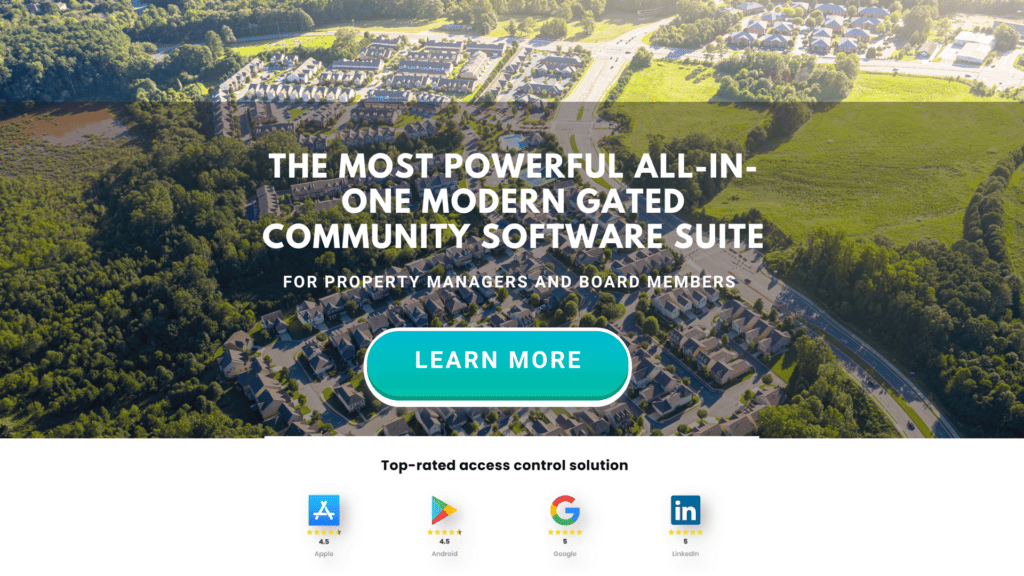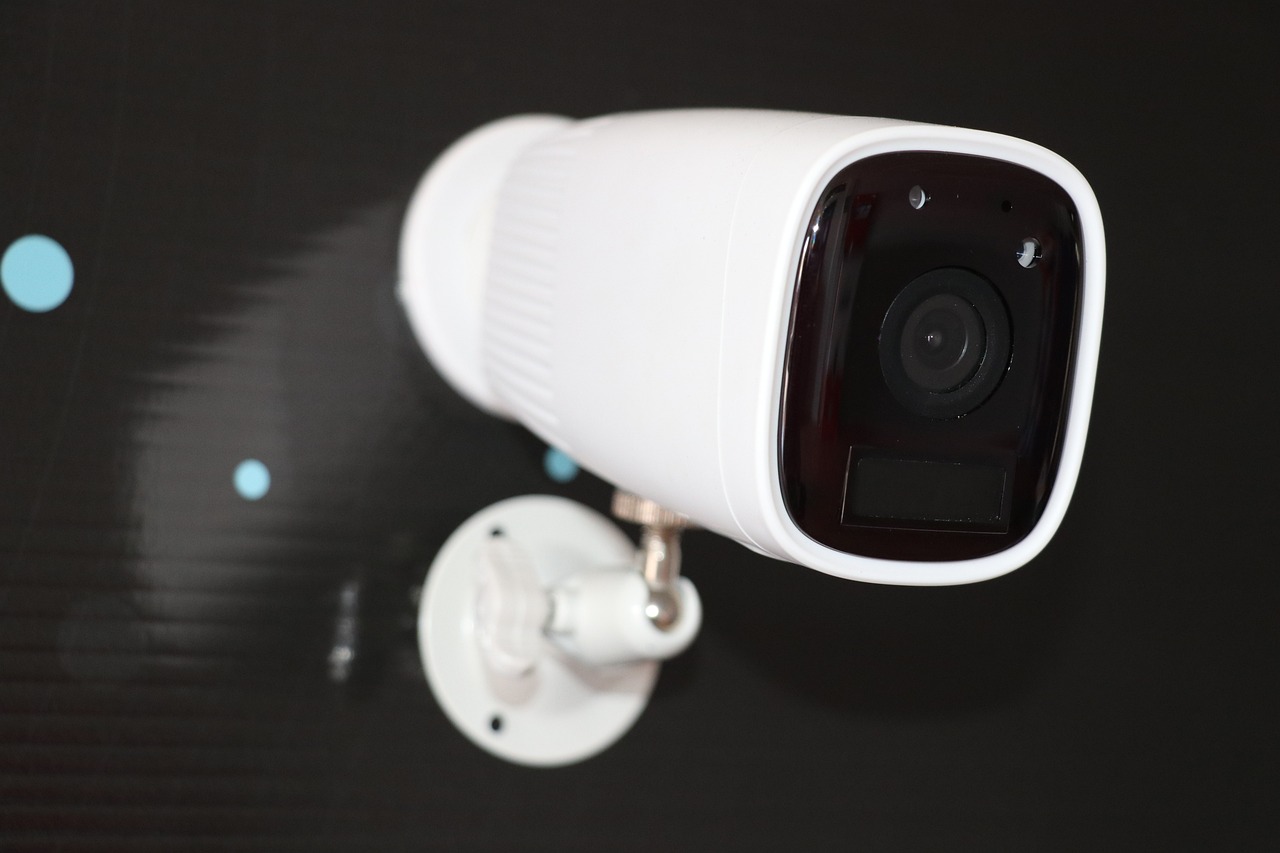Technology has become a security cornerstone for residential communities governed by Homeowners Associations (HOAs). By embracing things like access control, artificial intelligence (AI), license plate recognition (LPR), and the Internet of Things (IoT), HOAs can foster safer, more convenient, and welcoming resident environments.
This article explores how technology transforms HOA security, helping property managers and boards enhance protection and ease of access for their communities.
IN THIS ARTICLE
- The Importance of Security in HOA Communities
- Key Technologies Enhancing HOA Security and Access Control
- Benefits of Technology-Driven Access Control for HOAs
- Choosing the Right Technology for Your Community’s Needs
- The Future of HOA Security: A Look Ahead
- Conclusion
The Importance of Security in HOA Communities
Security is a top priority for any HOA, as it protects property and residents and maintains the community’s reputation and appeal. Potential residents and current homeowners look to HOA leadership to establish a safe and secure environment.
With technology-driven solutions, HOAs can create a streamlined, highly effective security approach, ensuring only authorized individuals can access community facilities and residential areas.
Key Technologies Enhancing HOA Security and Access Control
Let’s take a look at some of the key technologies that make up modern HOA security portfolios.
1. Access Control Systems: The Foundation of HOA Security
Access control systems are the backbone of community security, and technology has taken them to a new level. With digital and mobile access, entry points are safer and easier to manage than ever.
These systems now utilize various credentials—key fobs, mobile phones, or biometric data—making access control secure and highly convenient.
Mobile Access and Remote Management
Gone are the days when residents needed physical keys or easily misplaced access cards. Today’s systems allow residents to use their smartphones for entry, which means no lost keys and fewer unauthorized duplicates. Additionally, property managers can monitor and control access remotely, making it easy to lock or unlock doors from anywhere.
To learn more about modern access control solutions, check out The Importance of Access Control in HOA Communities.
2. Visitor Management: Enhancing Security While Welcoming Guests
Visitor management is essential for keeping communities secure while ensuring guests feel welcome and vendors can do their jobs. With digital visitor management systems, HOAs can track every visitor from the moment they enter to the moment they are off the property.
Suppose a delivery driver or other non-resident is taking more than a reasonable amount of time. In that case, a notification can be automatically sent to your security team to assess the situation.
 Digital Passes and Pre-Approval Systems
Digital Passes and Pre-Approval Systems
Digital passes have become an efficient and popular feature. Residents can pre-authorize visitors by issuing them digital passes or QR codes, allowing them to enter without causing a delay. These passes can be time-limited, automatically expiring after the visit to prevent unauthorized re-entry.
This system ensures guests can access the property without compromising security, as every entry is tracked and logged.
3. Surveillance and Monitoring: The Eyes of the Community
Surveillance cameras have long been a part of HOA security, but modern technology has taken surveillance to a new level. Today’s high-definition cameras, equipped with night vision and motion sensors, ensure clear footage at any time of day.
Remember to respect the privacy of your residents and install security cameras only in shared public areas. For more best practices on surveillance installation, read our full guide.
Integrating Cameras with Access Control Systems
When surveillance is integrated with access control, security becomes proactive instead of reactive.
For example, cameras can automatically begin recording when an access point is triggered, capturing clear evidence if there’s a security breach. Property managers and security teams can receive real-time notifications to monitor and respond to situations as they unfold.
4. Artificial Intelligence (AI): Predictive and Proactive Security
AI is revolutionizing HOA security by providing predictive insights and proactive measures. By analyzing data, AI can detect unusual patterns and alert property managers to potential issues before they become threats.
Anomaly Detection and Alerting
AI-powered systems can monitor data from access control points and surveillance cameras to identify unusual activities. If a resident’s access card is used at an odd hour or if there are repeated failed entry attempts, the system can alert HOA management immediately.
This proactive approach ensures that potential risks are addressed promptly, enhancing the entire community’s safety.
5. Internet of Things (IoT): Creating a Connected Community
The Internet of Things (IoT) connects devices across a network, enabling them to “talk” to each other and work together. In HOA communities, IoT facilitates seamless communication between security devices, such as cameras, door locks, lighting, and sensors.
Automated Responses and Enhanced Monitoring
IoT integration allows for automation and customization based on real-time needs. For instance, lights can automatically turn on when motion is detected at an entry point, or gates lock automatically after a specific time.
This interconnected system is efficient and ensures that security measures are consistently maintained throughout the community.
6. License Plate Recognition (LPR): Ensuring Secure Vehicle Access
Vehicle security is just as crucial as pedestrian security, especially in communities with parking lots or gated entry points. License Plate Recognition (LPR) technology offers a solution by automating vehicle access based on plate data.
Tracking and Logging Vehicles
LPR systems scan the license plates of incoming vehicles, allowing only authorized plates to gain access. For residents, this means they can enter without stopping, while visitors must check-in.
The system also logs each vehicle entry and exit, which is particularly helpful in cases of theft or suspicious activity, as it provides a clear record of vehicle movements within the community.
Benefits of Technology-Driven Access Control for HOAs
Embracing these technologies brings multiple advantages to HOAs, enhancing security, convenience, and efficiency for everyone involved. Below, we take a look at these in more detail.
Improved Safety and Security
With layered security features like AI, IoT, and LPR, HOAs can maintain a high level of protection for their residents. Each entry point and access attempt is monitored and tracked, reducing the likelihood of unauthorized access and deterring criminal activity.
Enhanced Resident Experience
The convenience of mobile access and digital visitor passes creates a positive experience for residents and their guests. Residents appreciate the ease of use and control over guest access, which fosters a sense of community trust and comfort.
Cost Efficiency and Scalability
Many modern security solutions are cloud-based, which offers scalability and cost-efficiency. As communities grow, cloud systems allow HOAs to expand security features without extensive new installations, reducing long-term operational costs.
Choosing the Right Technology for Your Community’s Needs
Selecting the best technology solutions for HOA security requires clearly understanding the community’s unique needs. Here are some factors to consider:
Assessing Security Gaps
Start by identifying security weaknesses in your community. Are unauthorized entries a concern? Is there a need for improved vehicle access control? This assessment will guide you in prioritizing features like LPR or additional surveillance.
Considering Resident Needs
Involving residents in the decision-making process can provide valuable insights. Surveys or meetings can help gauge interest in features like mobile access or visitor pre-approval, ensuring the system serves the community well.
Ensuring Integration and Compatibility
Choosing a system that can integrate with existing infrastructure or allow for future upgrades is essential. A system that works well with other technologies, such as security cameras or alarms, will create a cohesive security network that can be managed from a single platform.
The Future of HOA Security: A Look Ahead
As technology continues to evolve, the future of HOA security looks bright. We can expect more intuitive AI algorithms that predict and prevent issues before they arise and IoT devices that adapt dynamically to community needs.
The increasing adoption of cloud-based solutions will likely lead to even more streamlined management, making it easier than ever for HOAs to monitor and protect their communities.
Conclusion
Technology transforms how HOAs handle security and access control, making communities safer and more efficient. Adopting systems integrating access control, visitor management, AI, and IoT allows HOAs to provide residents with a secure and convenient living experience.
As technology advances, the possibilities for enhanced security in HOA communities are endless, ensuring that communities remain safe, welcoming, and well-protected for years to come.

